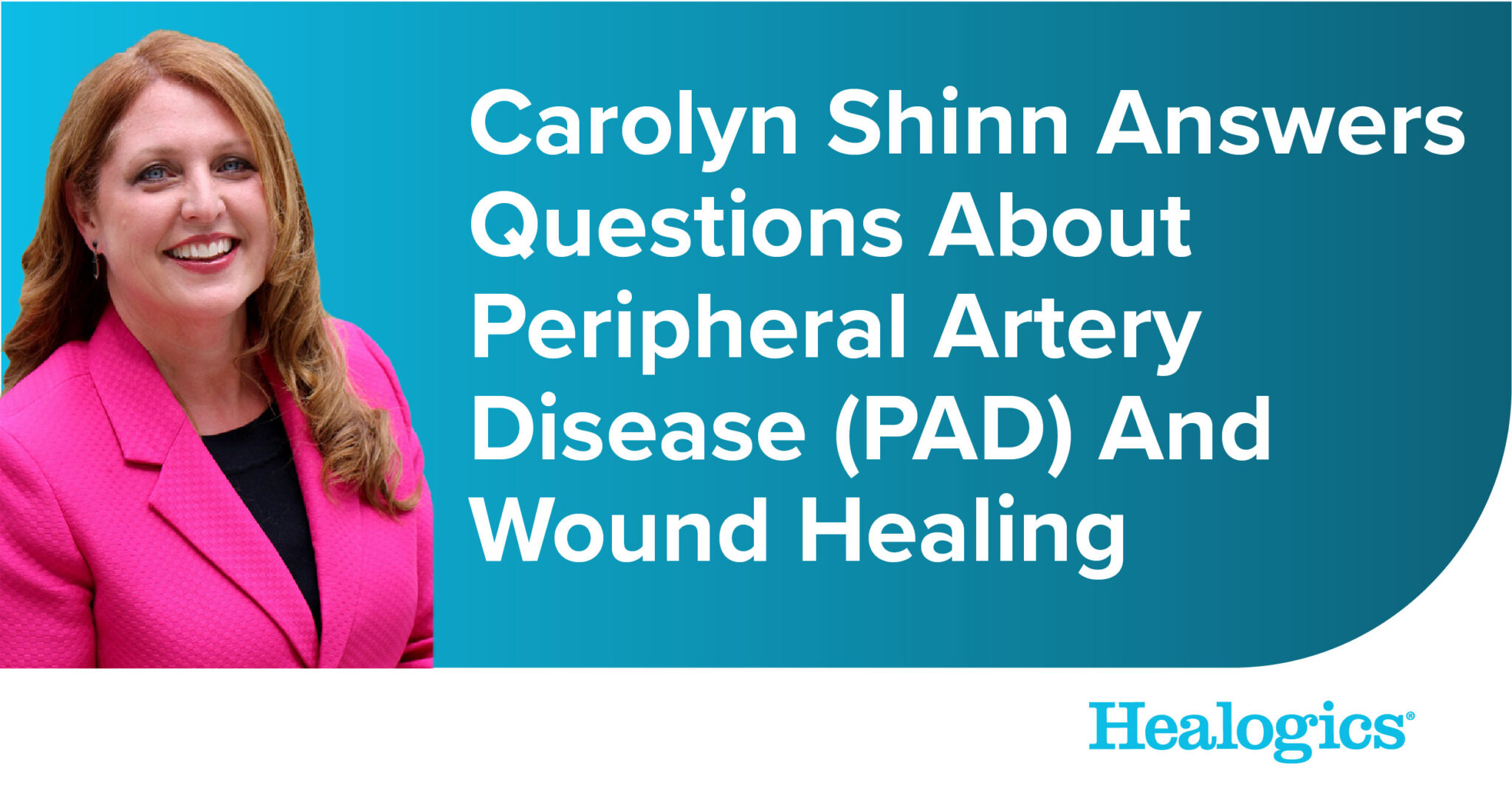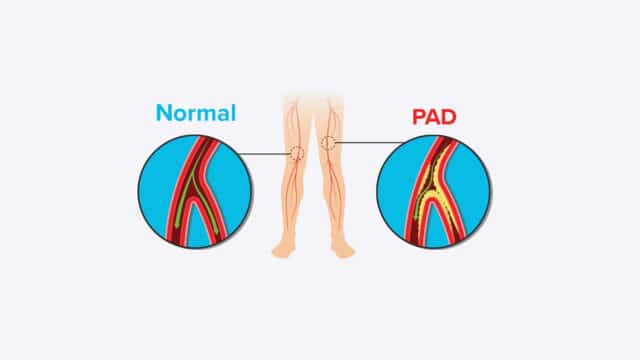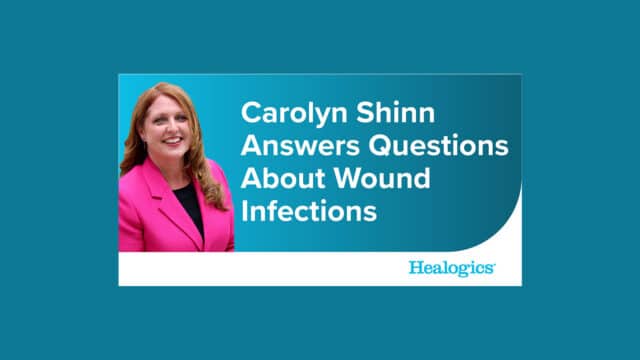Q&A about PAD with Carolyn Shinn, RN, BSN, CWS, Vice President, Clinical and Quality Process Excellence
 What are the most significant warning signs for PAD?
What are the most significant warning signs for PAD?
The most common symptom is pain in the lower legs and feet, especially when walking or climbing stairs. But many people living with PAD—up to 40%—experience no symptoms until they develop a wound or sore on their foot or leg. They may not have felt the wound as it worsened due to neuropathy or nerve damage related to their PAD.
Who should get screened for PAD?
The American College of Cardiology and the American Heart Association released joint practice guidelines recommending screening adults 65 years or older, adults 50 years or older with risk factors for atherosclerosis or a family history of PAD, and adults younger than 50 with diabetes and at least one other atherosclerosis risk factor.
How does PAD increase the risks of non-healing wounds?
PAD reduces blood flow by partially or completely blocking the arteries. This affects the skin and tissue on the extremities, typically lower legs and feet, making them more prone to develop sores or ulcers. It also limits the ability to heal since blood flow is restricted to the lower legs and feet, therefore not delivering enough healing oxygen and nutrients to the wound.
Why are PAD-related amputations increasing?
Early diagnosis and treatment are important in preventing infections and limb loss. Unfortunately, the COVID-19 pandemic has led to delayed healthcare for many vulnerable and at-risk patients. We encourage you to seek specialized care right away to avoid serious complications.
The American Heart Association recently set a goal of reducing non-traumatic amputations by 20% by 2030. Healogics is joining in this effort to spread awareness to lower help support this goal.
How Can You Prevent PAD?
While there is no way to prevent PAD completely, risks may be greatly reduced by making lifestyle changes, such as decreasing or not smoking, eating healthy and exercising.
You can find more information about Peripheral Artery Disease and common chronic wounds at our 2021 The Year of Healing page.
If you have PAD and are living with a non-healing wound, contact a Wound Care Center to discuss the advanced treatments available.



